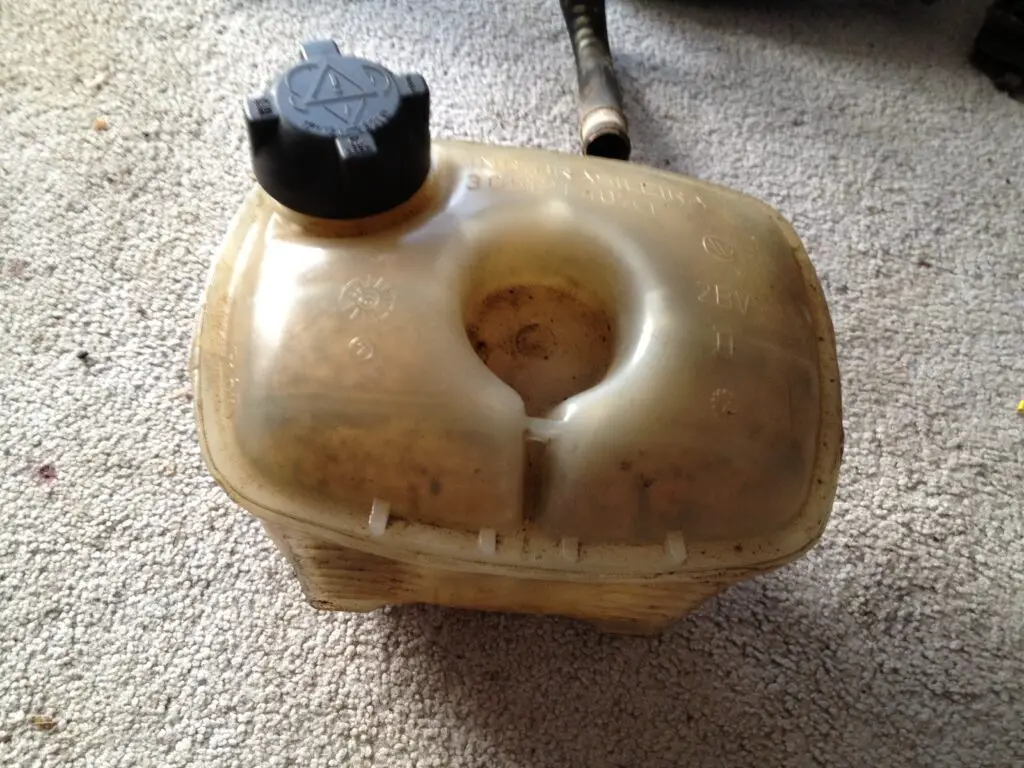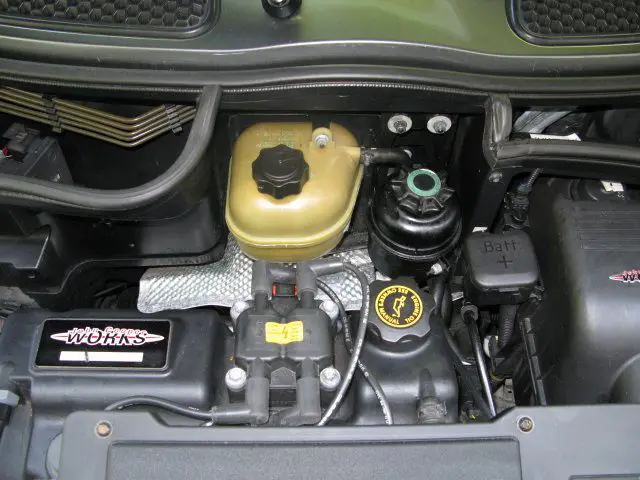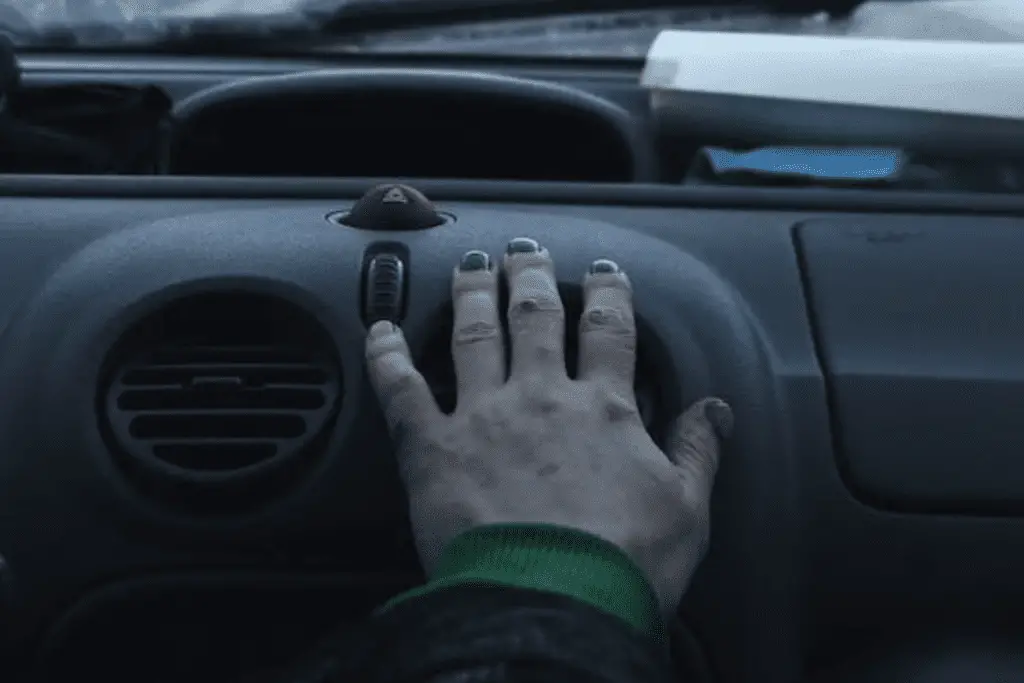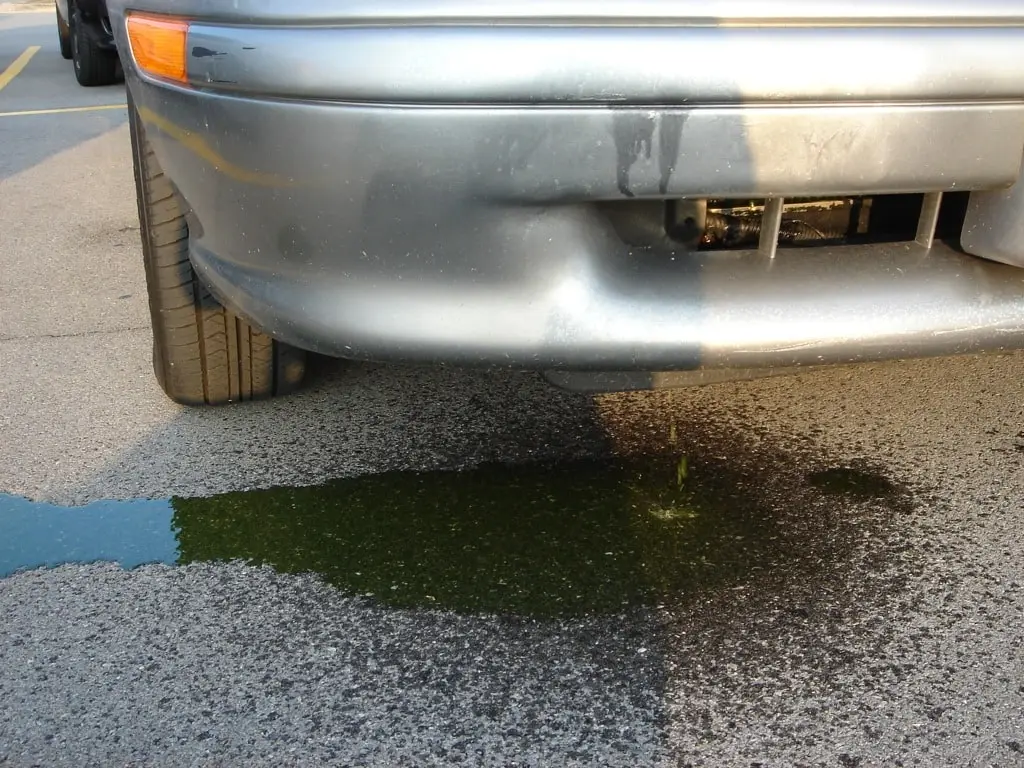Overfilling your coolant reservoir can lead to some serious issues with your vehicle’s engine and electrical system. But don’t panic – with some simple steps, you can remove the excess coolant and get your car back to normal. This comprehensive guide will walk you through everything you need to know & What to Do If You Overfill Your Coolant Reservoir, from causes and symptoms to solutions and prevention.👷♂️
What is a Coolant Reservoir?
The coolant reservoir, also known as the overflow tank or expansion tank, is a plastic tank that is part of your car’s cooling system. It is connected by hoses to the radiator and acts as an overflow container when the coolant expands with rising temperatures.
As the coolant heats up and expands, the excess flows through the radiator cap and into the reservoir tank. Once the engine cools back down and the coolant contracts, it gets sucked back into the radiator. This provides a buffer so pressure doesn’t build up in the cooling system.

The reservoir tank has minimum and maximum level lines molded into the plastic. Maintaining the right amount of coolant between these lines is important for proper engine cooling and preventing overflows.
Why Coolant Level Matters
Keeping your engine’s coolant at the recommended level is really important for a few reasons:
Prevents Overheating: Coolant absorbs heat from the engine and keeps things running at an even temperature. Not enough coolant increases the risk of overheating, which can damage cylinders, gaskets, and other expensive engine parts. Yikes!
Lubricates Water Pump: The coolant keeps seals in the water pump lubricated to prevent leaks. Without it, seals dry out and let coolant escape.
Protects Against Corrosion: Antifreeze has special additives that form a protective coating inside the engine. This prevents rust and scale from building up over time.
Removes Air Pockets: The right coolant level helps remove air bubbles that can get trapped in the system. Air pockets block fluid flow and reduce cooling.
So in summary, coolant is super important stuff! Now let’s talk about What to Do If You Overfill Your Coolant Reservoir.
Dangers of Overfilling the Reservoir
We all know auto repair bills can be brutal. An overfilled coolant reservoir can lead to some pricey issues, like:
Engine Overheating: Too much coolant leaves less room for expansion as things heat up. Excess pressure can build up, strain the hoses, and lead to overheating. Not good!
Coolant Leaks: That extra fluid has to go somewhere, so it often leaks out of the overflow tubes onto the ground. You’ll notice colorful puddles under your car.
Electrical Shorts: In the worst case, overflowing coolant could touch electrical wiring and components, shorting them out. This can leave you stranded.
What to Do If You Overfill Your Coolant Reservoir? Obviously it’s best to avoid overfilling in the first place. But what if you already did? Let’s go over how to tell if you have too much coolant.
Detecting an Overfilled Reservoir
If you suspect you went overboard pouring that coolant, here are some dead giveaways:
Coolant Above Full Line: First things first, pop the hood and check the reservoir when the car is totally cold. Coolant above the “Full” mark is a clear sign of overfill.
Leaks Under the Car: Spilled coolant has to drain somewhere, so check underneath for green, orange, or other colored puddles. Not normal!
Steam From Engine: White steam billowing up could mean too much pressure in the cooling system from the excess.
Dashboard Warning Lights: Many cars have a coolant level sensor that triggers a light if coolant is too high. Check for a temperature or “check engine” light.

If you spot any of these symptoms, it’s best to remove the extra fluid ASAP. Here are a few ways to do that:
Getting Rid of Excess Coolant
Use a Turkey Baster: Suck out the extra coolant with a turkey baster until the reservoir is near the “Full” line again. Easy peasy!
Open Drain Plug: Open the drain plug at the bottom of the reservoir to drain some fluid into a container. Close it once the level looks right.
See a Mechanic: For a complete drain and refill, have a shop empty the system and replace lost coolant. Worth the peace of mind!
And remember – never drive the car if you know the reservoir is overfull. That could really compound issues.
Avoiding Overfills in the Future
We all make mistakes, even seasoned mechanics! Here are some tips to prevent going overboard on the coolant again:
Check When Cold: Only inspect (and top up) coolant levels when the engine is completely cool. When it’s warm, coolant expands and levels read higher than normal.
Add Slowly: Fill the reservoir in small amounts, replacing the cap and double checking the level every so often. This prevents major overshoots.
Use Proper Mix: Make sure to dilute concentrated coolant properly, following your vehicle’s recommendation. Straight antifreeze fills faster than when mixed.
And of course, if in doubt, have a professional handle the coolant service. It’s one less thing to worry about!
FAQs about What to Do If You Overfill Your Coolant Reservoir
What happens if coolant is above max line?
Coolant above the max line can lead to overheating, leaks, and electrical shorts. Have excess coolant removed immediately.
Can you drive with high coolant?
It’s not recommended to drive with an overfilled coolant reservoir. Safely remove excess coolant before operating the vehicle.
Will a car leak coolant if overfilled?
Yes, excess coolant often leaks from the overflow tubes onto the ground. Look for colored puddles under the car.
How do you get air bubbles out of coolant reservoir?
Squeezing the upper radiator hose while topping off the reservoir can help release air pockets. Let the engine fully warm up to open the thermostat.
Can too much coolant damage engine?
Yes, overfilling the cooling system can lead to overheating, gasket failure, water pump seal leaks, and damage to engine components.
Is it OK to mix different color coolant?
It’s best to flush out old coolant completely instead of mixing colors. Different coolant types can have incompatible additives.
The Takeaway on What to Do If You Overfill Your Coolant Reservoir
What to Do If You Overfill Your Coolant Reservoir? Dealing with an overfilled coolant reservoir isn’t fun, but also isn’t the end of the world. With some simple steps, you can get the levels back to normal and avoid any costly engine damage. Just stay diligent about checking fluid levels under the hood and keep up with routine maintenance. Your ride will thank you!
Let me know if you have any other questions! I know coolant reservoirs can be kind of confusing at first. But now you’re armed with the knowledge to handle it like a pro.

